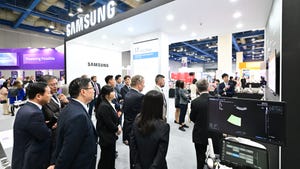Acacia, Oclaro in Optical Module Land Grab
Module vendors team up to develop interoperable coherent 100G and 200G modules that, they hope, will help them corner the lion's share of the telco metro optical market.
June 5, 2018

In what looks like a step towards a slightly more open coherent optical module market, Acacia and Oclaro have teamed up to develop interoperable CFP2-DCO (digital coherent optics) products that will provide transport system vendors and network operators with multiple sources for pluggable modules based on Acacia's Meru coherent DSP (digital signal processor) technology. (See Acacia, Oclaro Team Up on 100/200G CFP2-DCO Products .)
It also signals intent from Acacia and Oclaro to jointly corner a significant slice of what is set to be a growing market.
The move is noteworthy because, until now, the 100G/200G coherent module market has evolved as a "single source" model, mainly because it has been more operationally efficient and relatively cost effective for system vendors to source modules from a single supplier, knowing that the resulting products would interoperate.
Now, though, as the market for CFP2-DCO capabilities starts to grow, it seems there is demand from optical system vendors (and some of the operators that deploy their equipment) for a dual-source, plug-and-play module model that will provide at least a modicum of choice and competition, which in turn requires interoperability between modules (so they can be successfully deployed in the same network).
Acacia Communications Inc. and Oclaro Inc. (Nasdaq: OCLR) say they are reacting to market demand, but whether systems built using CFP2-DCO modules from multiple suppliers will be deployed in production networks is still questionable, notes Heavy Reading analyst-at-large Simon Stanley.
"Multivendor operation has to be part of the shift to a more open optical ecosystem, but it's not yet clear if anyone will really use different modules at each end of a point-to-point optical link. What is more important is that this will give equipment manufacturers and operators more flexibility," as they will be able to source their modules from more than one supplier, says Stanley, who adds that it's "interesting that Oclaro is using the Acacia Meru product rather than competing DSPs from NEL or Inphi."
But the analyst also notes that while this move is a step in a more open market direction, it doesn't enable a true multivendor environment. "This is a halfway house" as it only "offers compatibility between modules using the same DSP. Full multivendor operation will need compatibility between DSPs [from different vendors]."
Nevertheless, the new partners believe their tie-up will give them a competitive advantage and believe the metro and regional telco transport market will drive demand. "We think this will deliver both companies an advantage over those not taking the same approach," says Kevin Affolter, VP of strategic marketing at Oclaro. "We looked at a number of options for partnerships and found Acacia to have the best DSP technology for [100G/200G modules]," he adds.
So who are the rivals Acacia and Oclaro are hoping to steal a march on? Merchant DSP vendors Inphi Corp. and NTT Electronics Corp. (NEL) as well as optical module players such as Finisar Corp. (Nasdaq: FNSR), NeoPhotonics Corp. (NYSE: NPTN) and, in the short term at least, even Lumentum Holdings Inc. all spring to mind.
Lumentum, though, is set to become a part of this new relationship and add heft to the proceedings as it's currently in the process of acquiring Oclaro. (See Lumentum Sweeps Up Oclaro in $1.8B Deal.)
So when will these interoperable modules hit the market? Acacia already has its Meru-based CFP2-DCO commercially available, while Oclaro will have samples available towards the end of 2018 and have commercial products early next year.
Tom Williams, senior director of marketing at Acacia, says the company is just starting to see a ramp in demand for CFP2-DCO modules, "and the market usually peaks about two to three years after the start of the ramp." He adds that this form factor will also be applicable for 400G applications, "so this is a technology option that's going to be around for a long time."
Acacia and Oclaro will both be hoping that the move pays off in terms of new business as both have been hampered by the recent ZTE shenanigans that have effectively barred them from supplying what has historically been a significant systems vendor customers for both. (See Acacia Hit Worst by ZTE Components Ban.)
— Ray Le Maistre, Editor-in-Chief, Light Reading
You May Also Like










